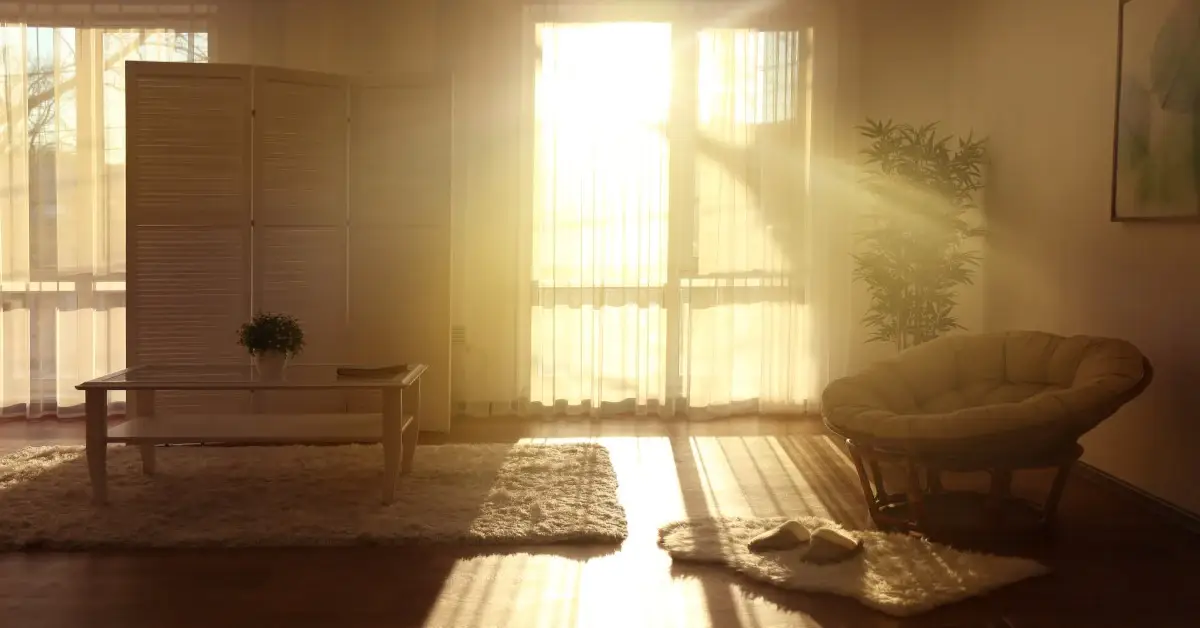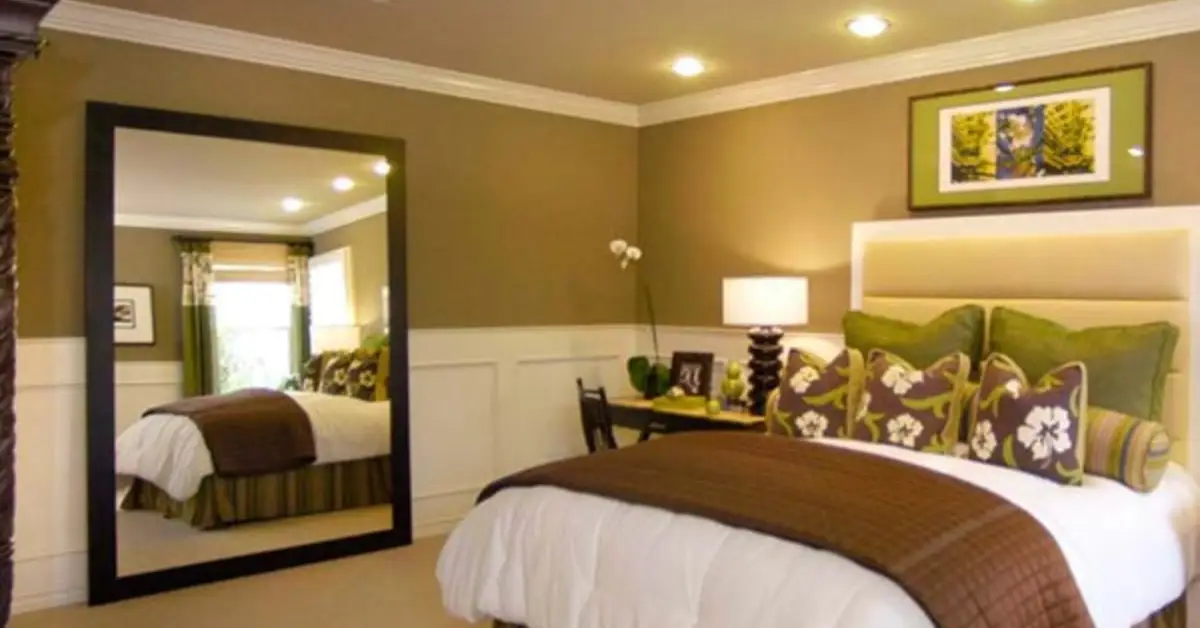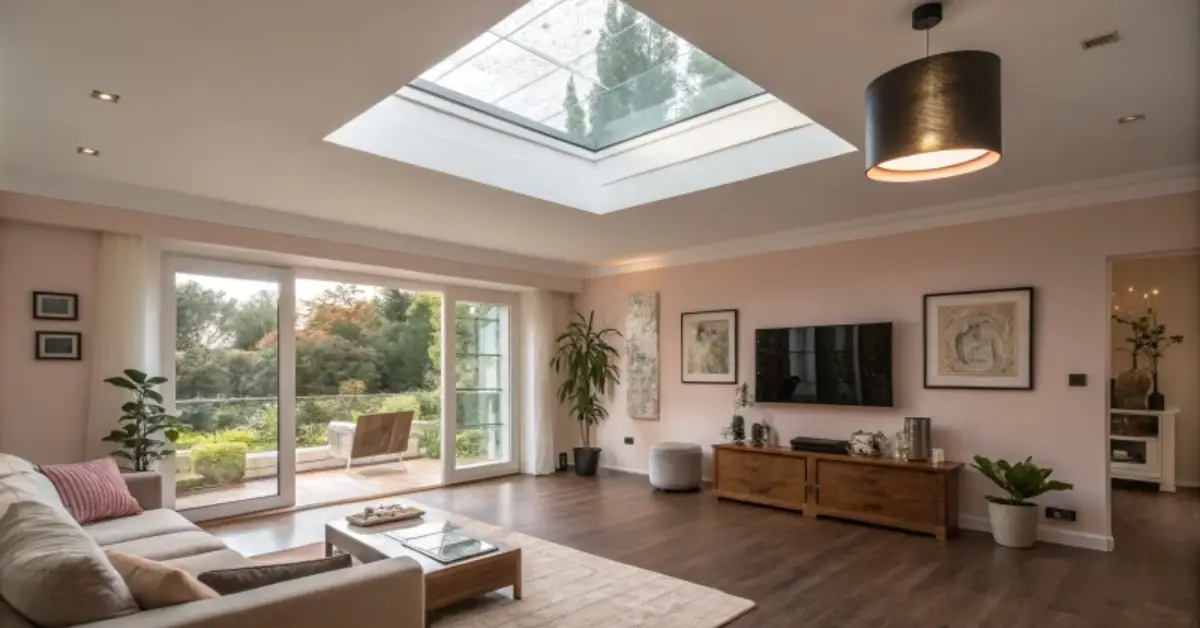5 Easy Ways to Make Your Rooms Brighter Naturally
I’ve spent years experimenting with ways to make a home feel lighter, airier, and more welcoming, and I’ve realized something important: natural light isn’t just about aesthetics—it changes the way you experience a space. The moment sunlight hits your walls or spills across your floors, it lifts your mood, sharpens your focus, and even makes your home feel larger. It’s one of those small things that has a surprisingly big impact on how you feel every day.
But here’s the thing—I know that not everyone lives in a sun-drenched apartment or a house with huge windows. Many of us have rooms that feel more like caves, with corners that seem permanently shadowed. I’ve been there, and I know how frustrating it can feel to try and brighten a space without knocking down walls or spending a fortune on renovations.
That’s exactly why I wanted to put together this guide. I’ve distilled years of trial and error, expert advice, and research into five simple, practical hacks that anyone can use to increase natural light in their home. These aren’t vague suggestions or Pinterest ideas that look pretty but don’t actually work—they’re strategies I’ve tested, tweaked, and seen produce real results.
By the end of this article, you’ll have actionable tips that can transform your darker rooms into spaces that feel vibrant and welcoming. And the best part? You can start implementing most of these hacks today. I promise, once you start letting light work for you, your home—and the way you feel in it—will never be the same.
Why Natural Light Matters for Your Home
I’ll be honest—when I first started paying attention to how much natural light my home was getting, I didn’t realize just how much it affects everything from mood to energy bills. The benefits of sunlight go far beyond simply making a room look pretty. Once you start noticing the impact, you’ll want to prioritize light in every corner of your home.
Physical and Mental Benefits of Sunlight at Home
Mood and Productivity Boosts
I’ve found that even a small amount of sunlight streaming into a room can completely change my energy levels. Sunlight regulates your circadian rhythm, which helps you feel alert during the day and sleep better at night. For me, a brighter room in the morning meant starting work with more focus and finishing tasks faster. Here’s what sunlight can do for you:
- Improves overall mood and reduces feelings of stress or anxiety.
- Increases focus and productivity, especially if you work from home.
- Makes spaces feel more open, airy, and inviting, which naturally encourages activity and engagement.
Vitamin D and Health Benefits
Aside from mental clarity, sunlight is a natural source of vitamin D, which is essential for bone health, immune function, and energy levels. Even just 15–30 minutes of indirect sunlight in a well-lit room can make a difference. According to Healthline, regular exposure to natural light also supports a healthy sleep-wake cycle, reduces fatigue, and helps maintain a positive outlook.
Financial and Energy Benefits
It might surprise you, but natural light can also save you money. I’ve noticed that rooms that get plenty of sunlight need far less artificial lighting during the day. Here’s how that plays out practically:
- Reduced electricity bills because you rely less on lamps and overhead lights.
- Energy efficiency improvements, especially in winter when sunlight can help naturally warm your space.
- A home that feels more welcoming, which can even increase its resale value if you ever decide to sell.
Identify How Light Enters Your Home

Before I tried any hacks, I had to understand exactly how light behaves in my home. You can’t fix what you don’t measure, and the same applies to natural light. Most guides jump straight to “do this” without explaining the first step, but knowing your starting point makes all the difference.
Room Orientation and Window Placement
Take a walk through your home at different times of day. Notice:
- Which rooms get morning sunlight and which get afternoon light.
- The direction your windows face—south-facing rooms in the northern hemisphere usually get the most consistent sunlight.
- Any furniture or large objects that block light from reaching deeper areas.
Understanding orientation helps you choose the right strategies—whether it’s mirrors, paint, or rearranging furniture—to amplify the light you already have.
Using Light Mapping to Detect Dark Spots
Once you know where sunlight enters, I recommend mapping your space. Here’s what I do:
- Walk around with a notepad or your phone camera and mark areas that remain shadowed even in peak daylight.
- Take note of how light shifts throughout the day.
- Identify problem zones where small adjustments could make a big difference.
By doing this, you’ll know exactly where to focus your efforts, rather than guessing and hoping for the best.
Hack #1 – Maximize Window Efficiency
Windows are your home’s main gateway for natural light. Over the years, I’ve discovered that small tweaks can make a huge difference without any major renovation. You might think, “My windows are already clean,” but a little attention here goes a long way.
Cleaning and Maintenance of Windows
- Wash both the inside and outside of your windows regularly to remove dirt and grime. Even a thin layer of dust can reduce light significantly. As you clean and rearrange your furniture to let light in, don’t forget about 8 hidden spots in your home where allergens hide and how to fix them—this guide shows common areas and simple solutions.
- Check for any peeling caulk or worn seals that could let in drafts—fixing these keeps your home more energy efficient.
- Trim outdoor foliage that blocks sunlight from reaching your windows.
Using Reflective Window Films or Sheer Curtains
- Sheer curtains let in light while still giving privacy. I personally swapped out my heavy drapes for white or cream-colored sheers, and the difference was immediate.
- Reflective or light-diffusing window films can redirect sunlight deeper into a room without creating glare.
- Avoid dark or heavy blinds during the day unless you need them for heat control; they absorb light instead of letting it bounce around.
Even minor improvements here dramatically increase light levels and make your space feel brighter and more inviting. These are the small wins that make a real difference before you move on to more creative hacks.
Hack #2 – Strategic Mirror Placement

I can’t overstate how much mirrors changed my home’s lighting game. Mirrors don’t just make a space look bigger—they bounce existing sunlight around, brightening even the darkest corners. When I first experimented with this, I was amazed at how a few well-placed mirrors could transform a room that felt gloomy into one that felt warm and inviting.
How Mirrors Amplify Light in Dark Rooms
- Position mirrors opposite or adjacent to windows to reflect sunlight deeper into the room.
- Place mirrors near open doorways to channel light into hallways or inner rooms.
- Use tall, full-length mirrors to distribute light vertically, reaching areas that overhead lighting often misses.
Best Types and Sizes for Light Reflection
- Large rectangular mirrors work best in living spaces because they cover more surface area.
- Frameless or thin-framed mirrors reflect the most light without distracting from your décor.
- Group smaller mirrors together to create a mosaic effect that multiplies sunlight in creative ways.
Common Mistakes to Avoid
- Don’t place mirrors where they reflect dark walls or clutter—this only doubles the gloom.
- Avoid overly ornate or heavily tinted mirrors that absorb rather than reflect light.
- Keep mirrors clean; even a thin layer of dust reduces reflection significantly.
Strategic mirror placement is one of the most cost-effective ways to brighten your home. It requires no major renovations and provides instant visual impact.
Hack #3 – Light-Friendly Paint and Surfaces
Once I mastered mirrors, I realized the walls and floors themselves could be your allies in amplifying sunlight. The colors and finishes you choose play a huge role in how light behaves in your home.
Choosing the Right Wall Colors
- Opt for lighter shades like off-white, soft beige, or pastel tones; they bounce light rather than absorbing it.
- Semi-gloss or satin finishes reflect more light than flat paints, creating a subtle glow across walls.
- For accent walls, choose colors that complement sunlight rather than clash with it—cool tones can make a room feel darker if misused.
Reflective Flooring and Furniture Materials
- Hardwood, light-colored laminate, or polished tiles help sunlight travel across floors more effectively.
- Mirrors, glass furniture, or metallic décor pieces act as secondary reflectors, amplifying natural light.
- Avoid overly dark rugs or furniture that absorb sunlight; instead, pick pieces that enhance brightness.
According to Better Homes & Gardens trends, homeowners are increasingly using pale, reflective surfaces to enhance lighting without major construction, proving that even subtle changes can dramatically improve a room’s feel.
Hack #4 – Declutter and Open Up Spaces

Even with windows, mirrors, and light-friendly surfaces, clutter can make a room feel dark and cramped. I learned early on that clearing unnecessary items and optimizing furniture placement makes a bigger difference than many realize.
Furniture Rearrangement to Allow Light Flow
- Keep taller furniture away from windows to prevent blocking sunlight.
- Place larger pieces along walls rather than in the center of a room to maintain open pathways for light.
- Use low-profile or transparent furniture, like glass tables, to reduce shadows.
Minimalist Decor Principles for Brighter Rooms
- Reduce knick-knacks, bulky décor, and visual distractions that absorb attention and light.
- Opt for open shelving instead of heavy cabinets wherever possible.
- Use light-colored or reflective décor items to keep the room airy and inviting.
Opening up space is one of those simple adjustments that gives immediate results. And while you’re decluttering to let light flow freely, you might want to check out these 5 easy items you can toss today using the no-touch, no-thought rule—it’s amazing how removing just a few things can instantly open up a room. Even a small decluttering session can transform a dark, cramped space into a welcoming, sunlit room.
If you’re bringing more sunlight and open space into your home, you’ll also want to make sure pests don’t take advantage of it—check out 10 proven ways to get rid of lizards naturally for simple home solutions.
Hack #5 – Indoor Plants and Natural Light Synergy
Adding greenery to your home isn’t just about aesthetics—I’ve discovered that plants can actually enhance the way sunlight feels in a room. When you combine the right plants with smart placement, you get a space that feels alive, vibrant, and brighter.
Choosing Plants that Thrive in Sunlight
- Select plants that naturally enjoy bright, indirect light, like snake plants, fiddle leaf figs, or succulents.
- Avoid plants that need deep shade in sun-drenched rooms, as they can wilt and make a space feel cluttered.
- Consider seasonal lighting—some plants may need to be moved closer to a window in winter when sunlight is weaker.
Positioning Plants to Enhance Light Perception
- Place taller plants near windows to help diffuse sunlight into the room.
- Use smaller plants on reflective surfaces, like light-colored shelves or near mirrors, to amplify brightness.
- Group plants strategically to create a natural focal point that draws the eye toward sunlit areas.
By using plants this way, you’re not just decorating—you’re actively working with natural light to improve your home’s atmosphere.
Bonus Tips – Small Upgrades with Big Impact

If you’re willing to take a few slightly bigger steps, there are small upgrades that can transform your lighting in ways even the best hacks can’t fully achieve. I’ve tried some of these, and they’re game changers.
- Skylights or Solar Tubes: Installing a skylight or a solar tube can flood rooms with natural light from above. Even a small addition like this dramatically changes how a space feels.
- Light-Colored Window Treatments and Blinds: Swap heavy or dark curtains for light-colored or semi-sheer options. They allow sunlight in while maintaining privacy.
These upgrades are perfect for rooms that remain stubbornly dark despite other hacks. According to Houzz, homeowners who incorporate small architectural features like skylights or lighter treatments often see the biggest difference in both brightness and mood—without fully renovating the space.
Takeaways – Brighten Your Home Today
After experimenting with these hacks for years, I can confidently say that increasing natural light in your home doesn’t have to be complicated or expensive. Here’s a quick checklist to help you get started immediately:
- Maximize Window Efficiency: Clean your windows, trim outside foliage, and use sheer curtains or reflective films.
- Strategic Mirror Placement: Place mirrors opposite windows or in darker corners to bounce sunlight around the room.
- Light-Friendly Paint and Surfaces: Choose lighter wall colors, semi-gloss finishes, and reflective floors or furniture.
- Declutter and Open Up Spaces: Rearrange furniture, reduce unnecessary décor, and keep pathways open for light to flow.
- Indoor Plants and Natural Light Synergy: Select sun-loving plants and place them to enhance brightness and create a lively atmosphere.
The best part? You don’t need to do all of them at once. Pick one hack and try it today—you’ll see results faster than you expect.
I’d love to hear from you: which of these hacks are you most excited to try first? Drop a comment below—I read every single one and love swapping ideas with fellow home enthusiasts.
And if you want more practical tips, detailed guides, and expert insights on transforming your home, head over to Build Like New. There’s a lot more waiting to help you make your space brighter, smarter, and more beautiful.
Disclaimer: Natural light levels vary depending on your home’s location, window orientation, and season. Results may differ, and some suggestions may require professional assistance for installation or structural changes.


